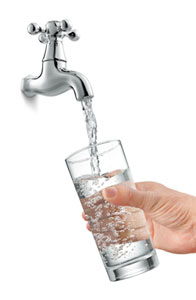
Is The pH of Pure Water Really Lower than Tap Water?
This question is answered when you understand the equilibrium relationship between CO2, HCO3, and CO3. In a closed system, the relative amount of each dune compound varies with pH value. At lower pH levels, CO2 is the predominant species. HCO3 is the predominant species at mid pH levels, and CO3 is present at higher pH levels.
Pure water contains a low and unstable level of ions, making electrode reading unreliable. In addition, RO membranes will reject dissolved ions but not dissolved gases, the RO permeate and RO feed will contain roughly the same amount of CO2. The HCO3 and CO3, however, are often reduced by 1-2 orders of magnitude. This upsets the CO2, HCO3, CO3 equilibrium that was established in the feed. In a series of equilibrium reactions, CO2 will combine with H2O driving reactions similar to that shown below, until a new equilibrium is established.
CO2 + H2O --> HCO3 + H+

To summarize:
The new equilibrium will always result in a lowering of permeate pH if there is CO2 gas present in the feed water.
The pH drop is usually largest for waters with high amounts of alkalinity or HCO3.
When there is very little CO2, HCO3, or CO3, there is a very small pH drop observed in the permeate water.
Therefore it is not true that reverse osmosis filters will always reduce the pH level of water to a noticeable amount. The pH difference after the RO depends on the composition of your input water source; depending on whether you have large amounts of gases such as CO2 in your local water supply.





